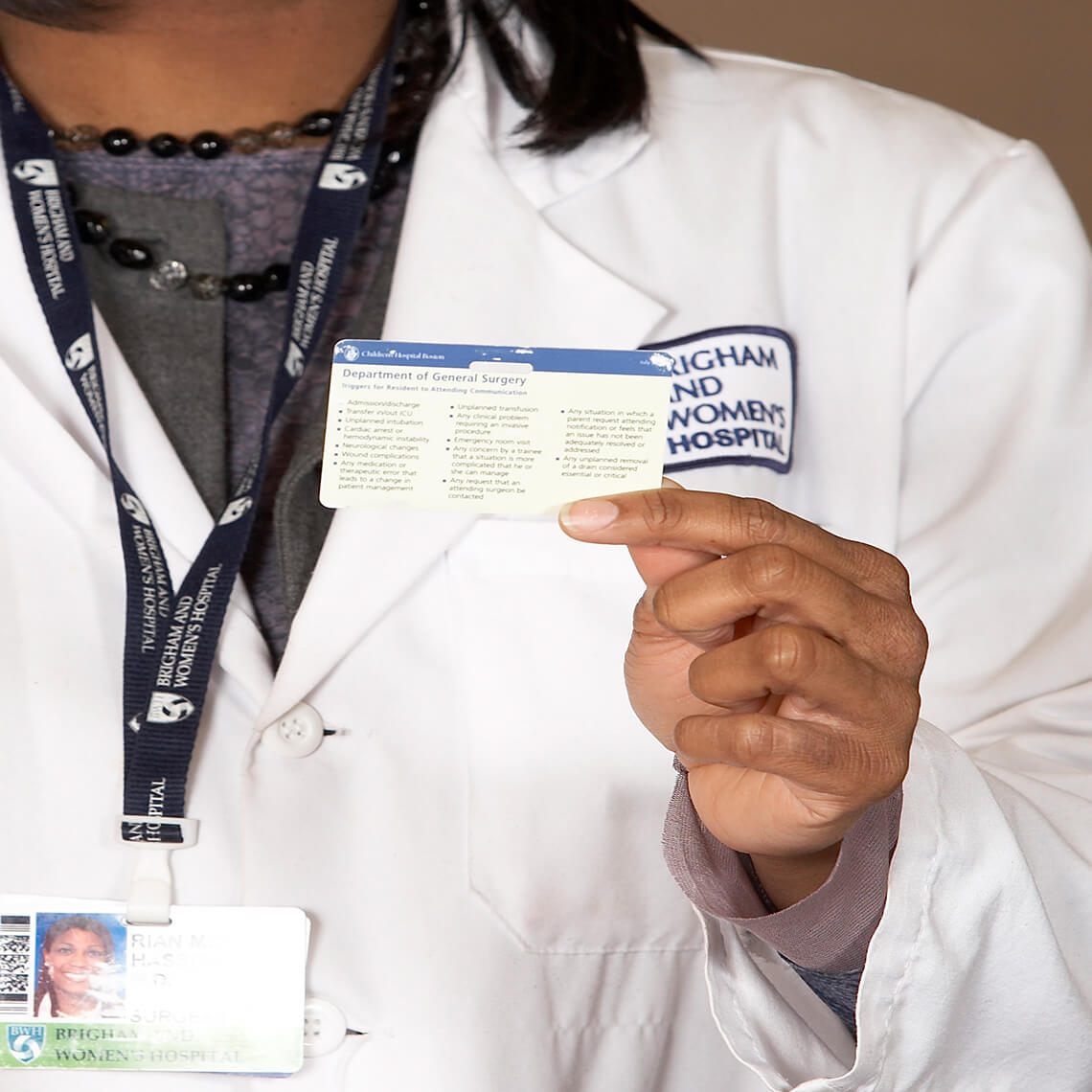Blog Post
Safety Salute: Boston Children’s Hospital Fights Back against Youth Vaping

A growing number of middle school and high school students today all across the country are using e-cigarettes (also called vapes and JUULs). In the process, they are putting themselves at risk for addiction, damage to their pulmonary system, and possibly even death. Boston Children’s Hospital is educating clinicians and families about these dangers to try to keep more young people safe.
Long before hundreds of people were hospitalized with vaping-associated respiratory illnesses (over the past few months), and long before a few dozen or more of them had died, I was talking to my kids about the dangers of vaping and letting them know how much the whole concept scares me.
As a writer with Boston Children’s Hospital, I am fortunate to get my information directly from the experts. I’ve had a chance to interview doctors who are treating teens who have become very sick from e-cigarettes. In fact, some of their patients have ended up in the intensive care unit on breathing support.
I also write for CRICO, so I understand how health care professionals who take a proactive role in educating people about vaping-related risks are offering a valuable service to the overall wellness and safety of their patients, while also protecting their own reputations.
Boston Children's Identifies Emerging Risks
Several physicians from Boston Children’s were among a group of experts who met with Massachusetts Governor Charlie Baker recently to discuss their concerns around the dangers of vaping. Following this meeting, the governor imposed a four-month ban on all vaping products and accessories in an effort to help combat this public health emergency. While this has been a very controversial move, it is a concrete example of how clinicians can make a real impact on the public health of a community.
Nonetheless, people who are addicted to e-cigarettes are still getting access to the product, so a lot more work needs to be done to fight back against an industry contributing to a new generation of kids becoming addicted to nicotine.
Get the Facts
Here are some important facts for ANYONE who is vaping —but particularly appropriate for kids:
- With vaping pods (the part that you add to the e-cigarette device) coming in flavors like bubble gum, popcorn, and gummy bears, many young people mistakenly think that when they vape they are just inhaling flavored mist. But actually, people who smoke e-cigarettes are ingesting high levels of nicotine.
- One e-cigarette has as much nicotine—or in some cases even more—as an entire pack of tobacco cigarettes.
- Kids who vape are also inhaling chemicals that can cause pulmonary damage, as well as cancer.
- Although e-cigarettes were initially marketed as the “safer cigarette,” unlike the effects of tobacco cigarettes, which can take years to present, the damage from e-cigarettes occurs in just a few uses, and people can also become addicted right away.
- Some kids vape THC (the active ingredient in marijuana) in very high concentrations. In fact, most of the kids being seen in the Adolescent Substance Use & Addiction Program (ASAP) at Boston Children’s Hospital use both nicotine and marijuana.
- Despite the growing popularity of e-cigarettes among middle school and high school students, many parents don’t know that their children are vaping.
- Some physicians today are not fully aware of how dangerous vaping can be.
- Many doctors also don’t know yet how to recognize the symptoms of vaping-related illness, which can be very non-specific and can be serious—or even potentially lethal.
- When conducting screenings with patients, the wording you use matters. Even teens who say they don’t smoke should be asked specifically about vaping, JUULing, juicing, and dabbing, which are popular terms for e-cigarette use.
To help spread these important messages and let people know exactly what we are up against in the war against vaping, Boston Children’s has put together a blog post that shares the facts and identifies some of the warning signs of vaping and vaping-related illnesses. The hospital has also started a dedicated page on its website providing reliable vaping-related information to support patients, families, and clinicians and to offer a list of trustworthy resources. In addition, Boston Children’s researchers are tracking vaping-related data to get a clearer picture of this epidemic.
Warning Signs
All health care providers, no matter where or with whom they work, need to be on the look-out for the signs of vaping-associated pulmonary illnesses (VAPI), which can include:
- Shortness of breath, coughing, chest pain
- Stomach pain, diarrhea, nausea, vomiting
- Fever and extreme fatigue
Further, some patients with VAPI don’t initially present with respiratory effects, so taking a thorough history is an important part of making a proper diagnosis.
In addition, vaping can also lead to behavioral changes, according to Dr. Sharon Levy, Director of ASAP at Boston Children’s.
“ We are seeing more and more kids with behavioral dysregulation, which we believe is related to the very high levels of nicotine that they get from vaping. Some kids report symptoms of nicotine toxicity from vaping; headaches, vomiting, and even seizures. ”
In addition, their habits and demeanor may change, which is something clinicians and parents need to take seriously.
“Many of the kids who come in for a substance use disorder evaluation have a sudden change in grades, change in functioning within the family, irritability, and aggression, which are all symptoms of a serious drug problem. Even though nicotine is the active ingredient in both traditional cigarettes and nicotine vapes, we rarely saw these problems in smokers because of the lower nicotine concentration,” Dr. Levy stresses.
She points out that all of this makes it essential for health care providers to protect their patients, and themselves, by asking the right questions when conducting screening to identify those who are at risk for serious consequences.
In addition, they can send patients and families to Boston Children’s webpage to get answers to common questions and to access a list of reliable resources, including some that offer help with quitting.
As a writer specializing in health care and patient safety, I commend Boston Children’s Hospital for taking a leadership role on this important issue. And as a parent, I sincerely hope more doctors will follow their lead in building awareness related to vaping and helping to keep our young people safe.
Related Blog Posts
Investing in Patient Safety


Mind the Gaps: Learning How to Avoid Miscommunication Pitfalls
January Safety Salute | MedStar Health Creating a Just Culture

